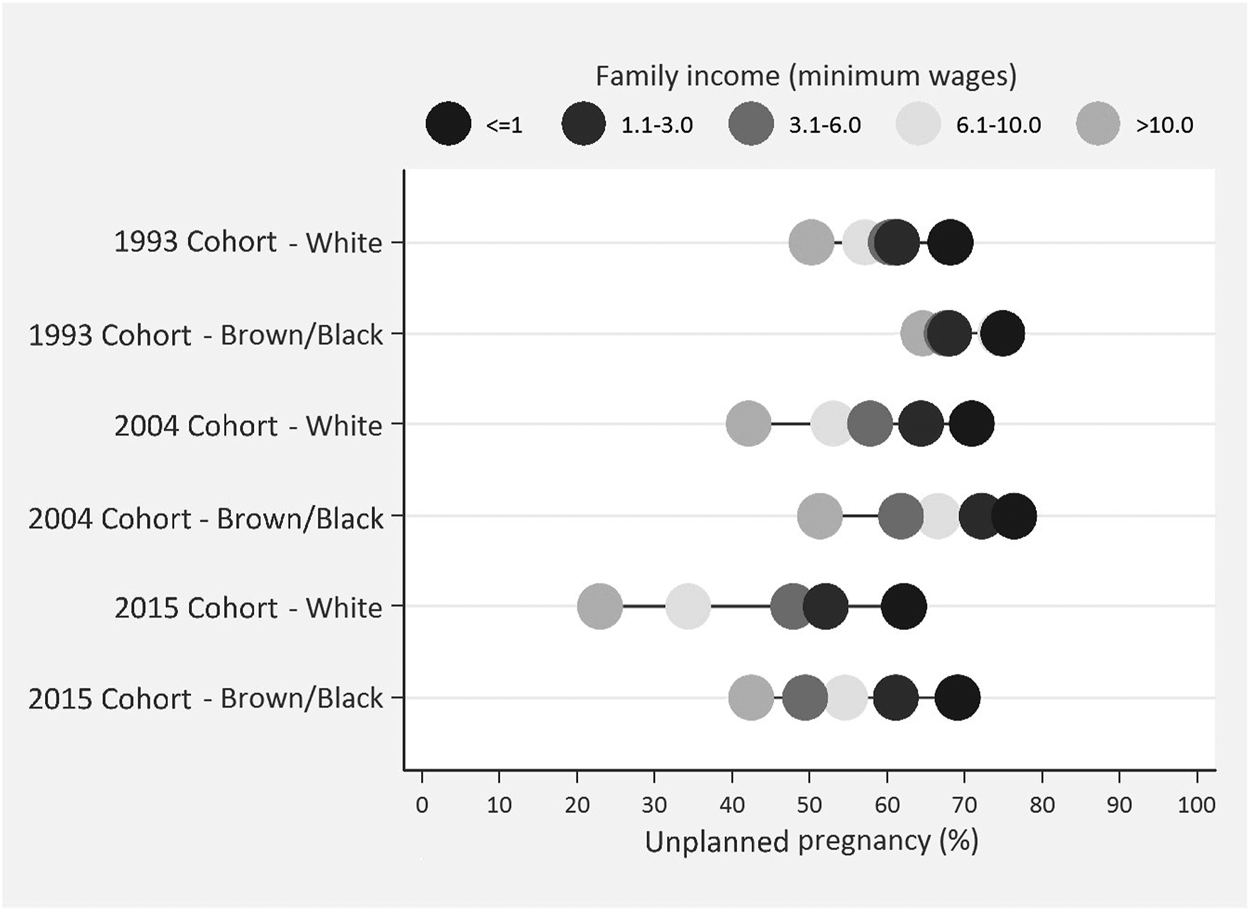In the original article, there were errors. A correction has been made to:
The legend in Figure 1 is inverted. The darker dots, that generally have lower prevalence of unplanned pregnancy, represent the women with higher family income; and the lighter dots represent those with lower family income. Unfortunately, this mistake misleads the interpretation of the figure. This error occurred during the final step of the Editorial process, when the authors replaced the color figure with a black and white version.
FIGURE 1

Prevalence of unplanned pregnancy according to monthly family income (in minimum wages) and maternal skin color in three Pelotas Birth Cohorts (Pelotas, Brazil, 1993, 2004, 2015).
Also, in the presentation of the results of Table 3, a minus sign is wrongly placed. Where it reads: “In 1993, the SII was–14.96, i.e., the prevalence of the outcome was–14.96 percentage points higher among the poorest mothers than among the richest mothers”, it should actually say “In 1993, the SII was–14.96, i.e., the prevalence of the outcome was 14.96 percentage points higher among the poorest mothers than among the richest mothers”.
I apologize for these mistakes on behalf of all co-authors.
Summary
Keywords
unplanned pregnancy, family planning, reproductive health, socioeconomic factors, health inequalities
Citation
Moreira LR, Ewerling F, dos Santos IS., Wehrmeister FC, Matijasevich A, Barros AJ.D., Menezes AM.B., Gonçalves H, Murray J, Domingues MR. and Silveira MF (2021) Corrigendum: Trends and Inequalities in Unplanned Pregnancy in Three Population-Based Birth Cohorts in Pelotas, Brazil. Int J Public Health 66:1604257. doi: 10.3389/ijph.2021.1604257
Received
20 May 2021
Accepted
28 May 2021
Published
19 August 2021
Volume
66 - 2021
Edited and reviewed by
Nino Kuenzli, Swiss Tropical and Public Health Institute (Swiss TPH), Switzerland
Updates
Copyright
© 2021 Moreira, Ewerling, dos Santos, Wehrmeister, Matijasevich, Barros, Menezes, Gonçalves, Murray, Domingues and Silveira.
This is an open-access article distributed under the terms of the Creative Commons Attribution License (CC BY). The use, distribution or reproduction in other forums is permitted, provided the original author(s) and the copyright owner(s) are credited and that the original publication in this journal is cited, in accordance with accepted academic practice. No use, distribution or reproduction is permitted which does not comply with these terms.
*Correspondence: Laísa Rodrigues Moreira, laisa.moreira.psi@gmail.com
Disclaimer
All claims expressed in this article are solely those of the authors and do not necessarily represent those of their affiliated organizations, or those of the publisher, the editors and the reviewers. Any product that may be evaluated in this article or claim that may be made by its manufacturer is not guaranteed or endorsed by the publisher.